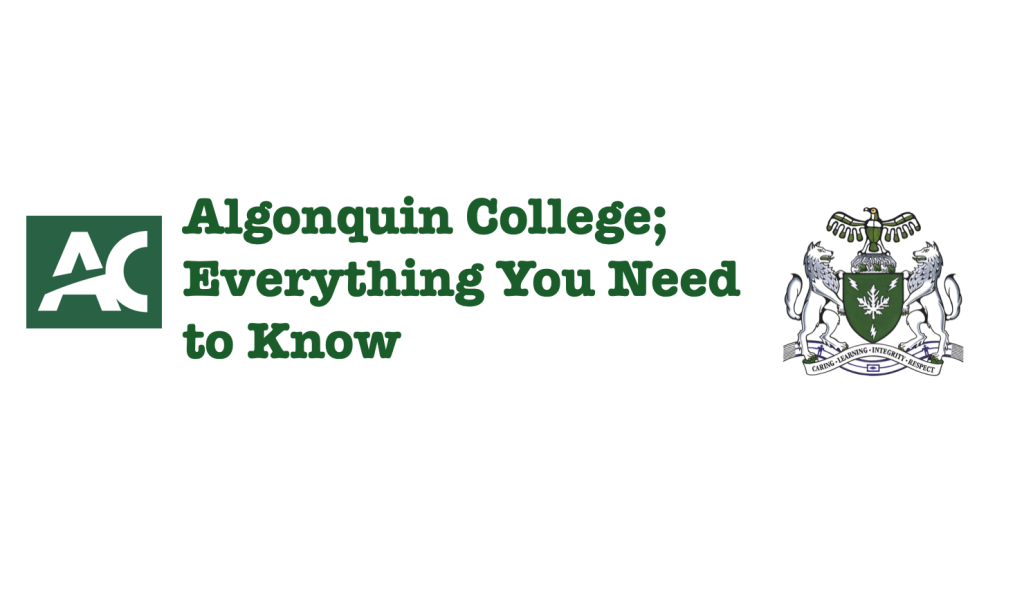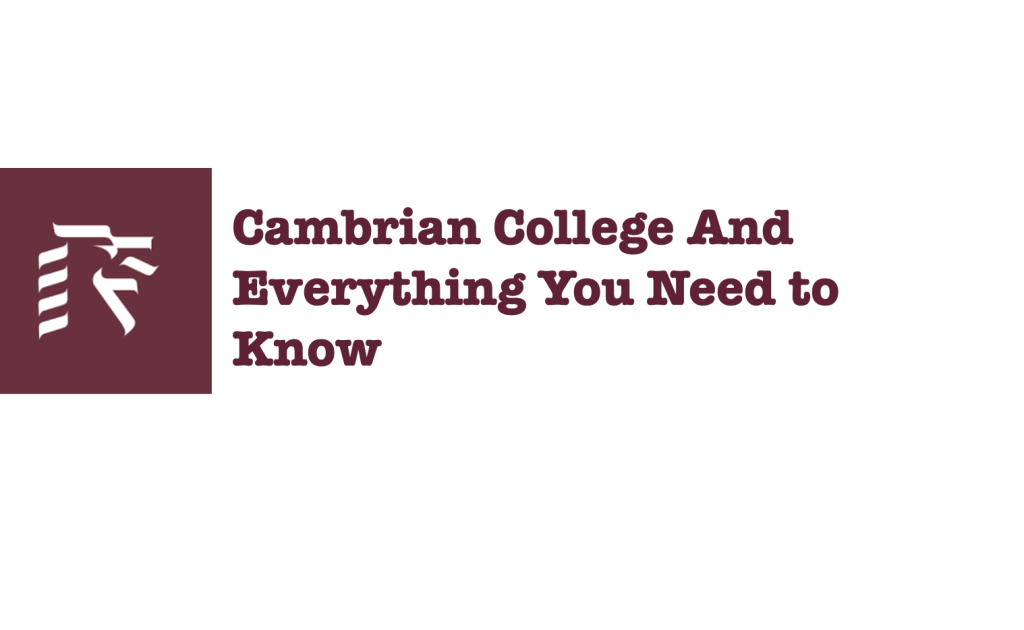Navigating Financial Aid for Post-Secondary Education in Ontario: A Guide for International Students — Securing financial aid is a critical undertaking for international students embarking on post-secondary education in Ontario, Canada. This comprehensive guide aims to illuminate the nuanced process of obtaining financial assistance. From comprehending the array of financial aid options available to navigating the application process, we will delve into the intricacies of funding education in the diverse and vibrant province of Ontario.

Table of Contents
A Comprehensive Guide to Applying for Financial Aid for Post-Secondary Education in Ontario, Canada – A Resource for International Students
Congratulations on considering Ontario, Canada as your destination for post-secondary education! Pursuing further studies in Ontario can provide you with excellent academic opportunities and enriching experiences. However, financing your education as an international student can be a challenging aspect to navigate. This guide aims to assist students from around the world in understanding and successfully applying for financial aid for post-secondary education in Ontario.
Read Also: 2023 Top 10 Best Universities in Ontario
Understanding Financial Aid for International Students:
Overview of Financial Aid Options:
Ontario offers a myriad of financial aid avenues tailored to support international students in their educational pursuits. These encompass scholarships, grants, and loans, each serving distinct purposes to meet the diverse needs of students.
Scholarships, for instance, may be institution-specific, recognizing academic achievements, or government-sponsored, promoting diversity and excellence in various fields. Grants, on the other hand, often consider financial need, providing targeted assistance to those facing economic challenges. Loans offer a financial bridge but necessitate repayment, requiring careful consideration of long-term financial implications.
Differences between Scholarships, Grants, and Loans:
Delving into the nuances of financial assistance is paramount. Scholarships, often merit-based, recognize academic achievements. Grants, grounded in financial need, provide essential support, while loans, requiring repayment, furnish a means to bridge financial gaps.
Understanding the distinctions is crucial for international students to make informed decisions. A combination of these financial tools may be necessary to address the diverse financial challenges that students may encounter.
Eligibility Criteria for Financial Aid Programs in Ontario:
Navigating the labyrinth of eligibility criteria is imperative. Each financial aid program in Ontario has specific prerequisites; understanding and meeting these criteria are pivotal to accessing the desired support.
For instance, eligibility for certain grants may hinge on factors such as family income, academic performance, or community involvement. Awareness of these criteria allows prospective students to tailor their applications and increase their chances of securing financial assistance.
Read Also: Top 10 Reasons Why Choose Ontario Universities
Preparing Your Finances:
Researching Costs:
The financial landscape of studying in Ontario extends beyond tuition fees. A meticulous exploration of costs, including accommodation, textbooks, and extracurricular activities, equips students with a comprehensive understanding of their financial commitments.
Additionally, understanding hidden costs, such as health insurance, transportation, and visa fees, is crucial. This comprehensive approach ensures that students are well-prepared for the financial responsibilities associated with studying abroad.
Creating a Realistic Budget:
Crafting a realistic budget is a foundational step in financial planning. This involves a detailed breakdown of anticipated expenses, ensuring that every facet of student life is accounted for, promoting financial stability throughout the academic journey.
Students should consider creating a contingency fund for unexpected expenses, ensuring that they have a financial safety net. This proactive approach to budgeting enhances financial resilience and reduces the likelihood of financial stress during the course of their studies.
Exploring External Funding:
Diversifying funding sources is a strategic approach. Beyond provincial aid, international students can explore external funding opportunities such as grants from foundations, private scholarships, and sponsorships, providing additional financial resilience.
External funding sources may include international organizations, non-profit foundations, and corporate sponsors. Students are encouraged to research and apply for these opportunities early in their academic journey to maximize their chances of securing additional financial support.
Read Also: Top 10 reasons why you should choose Ontario colleges
Key Financial Aid Programs in Ontario:
Ontario Student Assistance Program (OSAP):
- Eligibility Requirements and Application Process: OSAP’s eligibility criteria extend beyond academic merit, considering factors like income and family size. A comprehensive understanding of these requirements facilitates a seamless application process.Prospective applicants should take note of specific documentation requirements, such as proof of income and academic transcripts. Ensuring the timely submission of accurate information streamlines the application process and increases the likelihood of approval.
- Calculating Funding Entitlement: OSAP’s funding formula considers various elements. Delving into this formula aids students in understanding their funding entitlement, balancing grants and loans according to their unique financial circumstances.Understanding the intricacies of the OSAP funding formula allows students to make informed decisions about the composition of their financial aid package. This knowledge empowers them to navigate the financial landscape with confidence.
- Repayment Options and Timelines: Post-graduation financial planning is paramount. Exploring OSAP’s repayment options and timelines empowers students to navigate the transition from academia to the workforce with financial acumen.Students should be aware of the various repayment plans available and consider factors such as interest rates and loan forgiveness programs. This proactive approach ensures a smooth transition to the post-graduation financial landscape.
Register to apply by using the OSAP link
Scholarships and Bursaries for International Students:
- Prestigious Scholarships: Ontario boasts a rich tapestry of prestigious scholarships offered by educational institutions, governmental bodies, and private organizations. These scholarships, often competitive, recognize exceptional talent and commitment to academic excellence.Examples of prestigious scholarships may include the Ontario Trillium Scholarship, which supports international students pursuing doctoral studies, or institution-specific scholarships for outstanding academic achievements.
- Tips for Locating and Applying: Navigating the vast landscape of scholarships requires strategic planning. Tips for locating and applying for scholarships include leveraging online resources, networking, and tailoring applications to specific criteria.Students should actively seek information from university websites, scholarship databases, and academic departments. Networking with professors and peers can provide valuable insights into lesser-known scholarship opportunities.
- Common Application Requirements: Understanding the common requirements and evaluation criteria for scholarships is essential. This insight aids in crafting compelling applications that resonate with the expectations of scholarship providers.Common application requirements may include academic transcripts, letters of recommendation, and personal statements. Tailoring application materials to highlight achievements and aspirations increases the likelihood of success.
Work-Study Programs and Employment Opportunities:
- Balancing Work and Studies: Achieving a harmonious balance between work and studies is pivotal for academic success. Time management skills, setting realistic work hours, and prioritizing tasks contribute to a balanced and productive student life.Students should consider the demands of their academic program when seeking employment opportunities. Part-time, on-campus positions that align with their field of study can provide valuable experience without compromising academic performance.
- Availability of Employment: Exploring on-campus and off-campus employment opportunities broadens the scope for international students. Awareness of local regulations and employment guidelines ensures a seamless integration into the Canadian workforce.International students are encouraged to explore the availability of internships, co-op programs, and other experiential learning opportunities. These experiences not only contribute to professional development but also enhance employability after graduation.
- Work Permit Regulations: Comprehending work permit regulations is crucial. International students must navigate these regulations to secure employment opportunities, fostering financial independence while adhering to legal requirements.Understanding the requirements for obtaining a work permit, such as the Post-Graduation Work Permit (PGWP), is essential for students planning to work in Canada after completing their studies. Compliance with these regulations ensures a smooth transition to the Canadian job market.
Step-by-Step Guide to Applying for Financial Aid:
Research and Compile Documentation:
Collating essential documentation is a foundational step in the financial aid application process. This includes academic transcripts, proof of identity, and detailed financial statements.
Students should maintain an organized folder with all required documents, ensuring easy access when completing applications. Verification of document authenticity may be required, emphasizing the importance of accuracy and completeness.
Complete Applications:
Precision is key when completing financial aid applications. Adhering to deadlines, providing accurate information, and tailoring applications to specific program requirements enhance the likelihood of success.
Students should pay close attention to application instructions and seek guidance from financial aid offices if clarification is needed. Completing a mock application before the final submission can help identify and address any potential issues.
Follow-Up on Application Status:
Proactive engagement is paramount. Regularly checking the status of applications and promptly providing any additional information requested ensures a smooth and efficient application process.
Students should utilize online portals, email communication, and designated contact points to stay informed about the status of their applications. Timely responses to requests for additional information demonstrate commitment and responsibility.
Other Financial Considerations:
Health Insurance Requirements:
Understanding health insurance requirements is integral to a student’s well-being. International students must navigate the intricacies of health coverage to ensure access to necessary medical services.
Ontario’s health insurance system may require additional private insurance for international students. Familiarity with coverage details, renewal processes, and healthcare providers facilitates a seamless healthcare experience.
Budgeting for Living Expenses:
Beyond academic costs, budgeting for living expenses is a critical component of financial planning. Anticipating costs related to accommodation, groceries, transportation, and personal expenses enhances financial preparedness.
Students should explore cost-saving strategies, such as shared accommodation or public transportation options. Regularly reviewing and adjusting the budget based on changing circumstances ensures ongoing financial stability.
Financial Literacy Education:
Actively engaging in financial literacy education is a lifelong skill. Availing oneself of resources, workshops, and seminars on financial management equips students with the tools needed for responsible financial decision-making.
Financial literacy workshops offered by universities, community organizations, and financial institutions provide valuable insights into budgeting, saving, investing, and debt management. Participation in these programs enhances students’ financial resilience beyond their academic journey.
Conclusion:
In conclusion, navigating the multifaceted landscape of financial aid for international students in Ontario demands meticulous planning, proactive engagement, and a comprehensive understanding of available resources. By delving into the intricacies of financial aid options, preparing a robust budget, exploring key programs, and following a step-by-step application process, international students can position themselves for success in funding their post-secondary education in Ontario.
Addressing additional financial considerations, such as health insurance and prudent budgeting, contributes to a holistic and sustainable approach to financial management during the academic journey in this diverse Canadian province.
How to apply for financial aid for post-secondary education in Ontario for international students by Schools in Ontario


